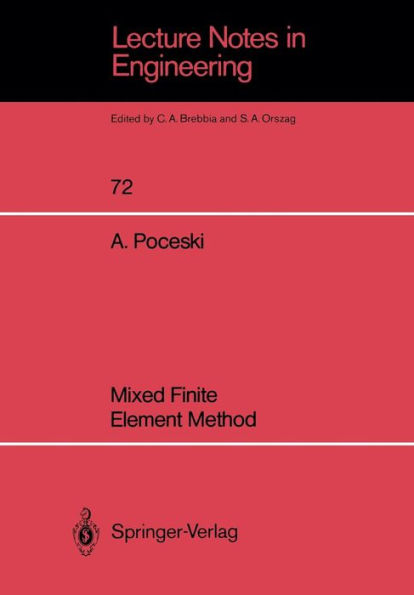Mixed Finite Element Method
In this book, based on 16 years of work on the finite element method, the author presents the essence of a new, direct approach to the FEM. The work is focused on the mixed method and shows how reliable results may be obtained with fewer equations than usual. The basic principles, the fundamentals and the essence of the FEM are presented, then the method is applied to the analysis of one, two, and three-dimensional problems. It is shown that mixed elements offer superior accuracy compared with stiffness elements. Finally, some new achievements and perspectives for further development are presented. The book is intended for undergraduate and graduate students, mathematicians, research engineers and practicing engineers. To understand the book, a familiarity with classical mechanics is sufficient.
"1000939683"
Mixed Finite Element Method
In this book, based on 16 years of work on the finite element method, the author presents the essence of a new, direct approach to the FEM. The work is focused on the mixed method and shows how reliable results may be obtained with fewer equations than usual. The basic principles, the fundamentals and the essence of the FEM are presented, then the method is applied to the analysis of one, two, and three-dimensional problems. It is shown that mixed elements offer superior accuracy compared with stiffness elements. Finally, some new achievements and perspectives for further development are presented. The book is intended for undergraduate and graduate students, mathematicians, research engineers and practicing engineers. To understand the book, a familiarity with classical mechanics is sufficient.
109.99
In Stock
5
1

Mixed Finite Element Method
345
Mixed Finite Element Method
345Paperback(Softcover reprint of the original 1st ed. 1992)
$109.99
109.99
In Stock

Product Details
| ISBN-13: | 9783540549161 |
|---|---|
| Publisher: | Springer Berlin Heidelberg |
| Publication date: | 02/06/1992 |
| Series: | Lecture Notes in Engineering , #72 |
| Edition description: | Softcover reprint of the original 1st ed. 1992 |
| Pages: | 345 |
| Product dimensions: | 6.69(w) x 9.53(h) x 0.03(d) |
From the B&N Reads Blog
